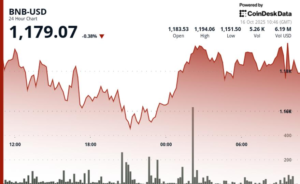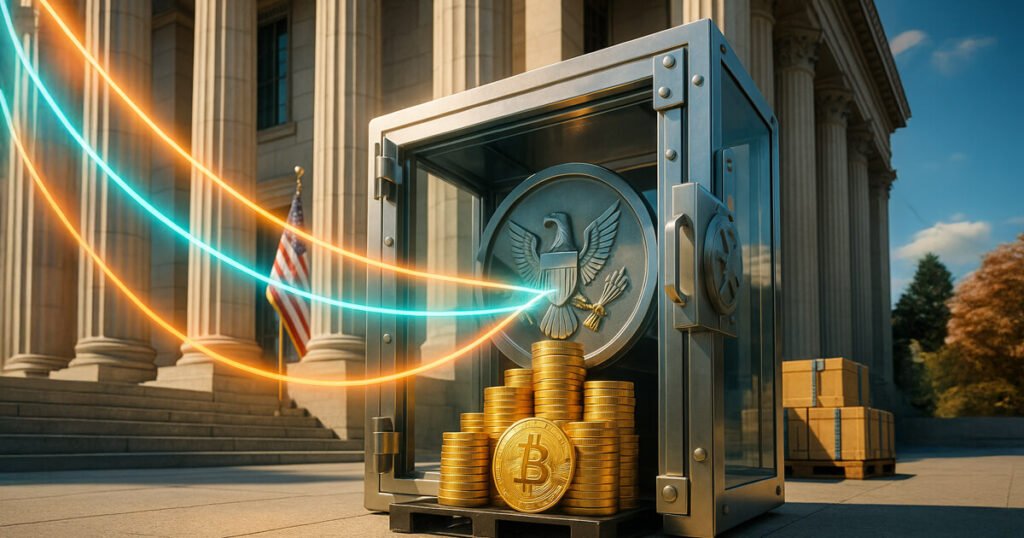Title: The U.S. Government’s Potential Bitcoin Holdings and the LuBian Mining Pool Fallout
The United States is on the verge of potentially seizing an additional $2 billion in Bitcoin associated with the now-defunct LuBian mining pool. This follows the government’s already considerable crypto seizure, which includes the largest amount of Bitcoin to date. As blockchain investigator Sani reported on October 15, approximately 16,237 BTC, valued around $1.8 billion at current prices, remains in circulation among addresses tied to LuBian. The identified wallets contain significant amounts, including 13,107 BTC in one address and smaller amounts in others. Notably, these accounts were not included in the latest U.S. forfeiture filings, which documented over 127,000 BTC that the government is seeking to claim. This information raises questions about the extent of federal agents’ outreach in the investigation and the complexities involved in tracing the full network of these assets.
While none of the addresses associated with specific Bitcoin movements appeared in the current forfeiture cases, this doesn’t imply that the funds are lost to law enforcement. Some may be protected under court orders, while others might be intermediary accounts involved in a larger laundering operation. This ambiguity underscores the ongoing challenge faced by investigators in fully sealing off the LuBian network’s control structure. The persistence of these funds within the crypto ecosystem illustrates that the investigation is ongoing, hinting at a more intricate web of transactions that needs to be unraveled.
If the U.S. government successfully recovers the remaining LuBian-linked Bitcoin, as well as the previously seized 127,000 BTC, its total holdings could exceed 343,000 BTC. This would represent approximately 1.6% of Bitcoin’s entire supply. Such a significant accumulation would position the U.S. as the largest nation-state holder of the cryptocurrency, well ahead of other contenders. Notably, the corporate treasury of Strategy, formerly known as MicroStrategy, holds around 640,000 BTC, making it the sole entity with a larger bitcoin reserve than the U.S. government’s potential stockpile.
The case of LuBian also serves as a crucial test for the Strategic Bitcoin Reserve (SBR), a program initiated under an executive order by President Donald Trump in March 2025. This initiative aims to manage seized digital assets effectively. Senator Cynthia Lummis has emphasized the necessity for the U.S. Congress to legislate clear frameworks for digital asset markets. According to her, it’s vital for law enforcement agencies to act decisively against malicious actors while also safeguarding innovation within the sector. Lummis advocates for the establishment of well-defined processes for the storage and return of seized Bitcoin, which could aid in converting criminal proceeds into valuable assets for the nation.
LuBian was once a powerhouse in the Bitcoin mining sector, ranking among the top six globally and commanding around 6% of the world’s hash power through operations in both China and Iran. However, its collapse resulted from a severe security flaw in its key-generation algorithm, which ultimately allowed hackers to drain 127,426 BTC, then worth around $3.5 billion, from its wallets. The ramifications of this breach were so significant that LuBian publicly broadcast messages beseeching the hacker for the safe return of the stolen coins, even offering monetary rewards for their recovery. Despite the desperate pleas, LuBian vanished from the market in early 2021.
On October 14, U.S. authorities unveiled an indictment connecting the stolen Bitcoin to a fraudulent network associated with Prince Group, a Cambodian conglomerate led by Chen Zhi. Reports suggest that Chen’s associates channeled proceeds from “pig-butchering” scams, a type of extensive online investment fraud into crypto-mining operations like LuBian. This revelation highlights the interconnectedness of various financial crimes and the complexity of tracking down stolen crypto assets in an evolving digital landscape. As the U.S. digs deeper into the LuBian affair, the outcome could set precedents for handling digital asset cases in the future, refining how law enforcement engages with cryptocurrencies and potentially solidifying the regulatory framework around it.
In the wake of these developments, the landscape of Bitcoin ownership and legality is rapidly shifting. The U.S. government’s proactive stance in seizing crypto assets aims to ensure that illicit gains do not go unchecked in the cryptocurrency space. Clarity in legislation could provide a more robust environment for innovation while giving law enforcement the tools needed to protect investors and maintain order in the emerging digital economy. As we move forward, the LuBian case could well be a defining moment in the history of Bitcoin regulation and seizure processes, impacting the way digital assets are perceived and managed in the U.S. and beyond.

















